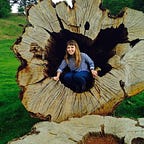3D object scans as a museum learning resource: an update
Last summer I blogged about a pilot website for use in the classroom, using 3D scans of objects from the Science Museum’s Mathematics: the Winton Gallery. Since then we’ve conducted a second round of evaluation, this time trialing the resource in real classroom situations.
Our questions
How do teachers and students use the resource?
What are the barriers to teacher and student engagement with and understanding of the resource?
We spoke to 5 teachers who used the resource in the classroom with their students.
Our findings
In line with our previous research, teachers confirmed that the 3D format was a very positive way to engage students, and made them feel ‘digitally up close’ to the objects. They felt that the most useful way to use the resource would be as either a lesson introduction, or as a standalone lesson on a topic linked to the objects. They appreciated the supporting information on the website but mentioned that a glossary of technical terms would have been helpful.
Students reported that they enjoyed exploring and manipulating the 3D scans. They found them intuitive to use and showed a lot of curiosity in the 3D scanning/ photogrammetry process used to create the models. There is a lot of potential here from a STEM learning and Art & Design point of view.
Recommendations
Throughout our research process, teachers have consistently told us that they would like to see a greater number of 3D scanned objects on offer, and this is something we’ve certainly taken on board. A future resource should also include a glossary, some information about how the models were produced, and the ability to view each scan in isolation from the others. Finally, with a longer lead time we would seek to involve teachers in the object selection process to ensure that the content is as curriculum-relevant and helpful as possible.
